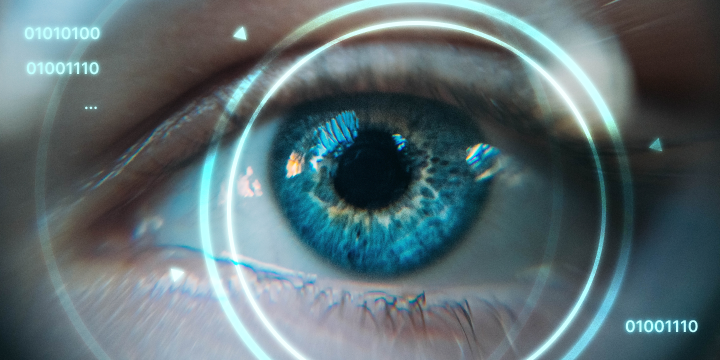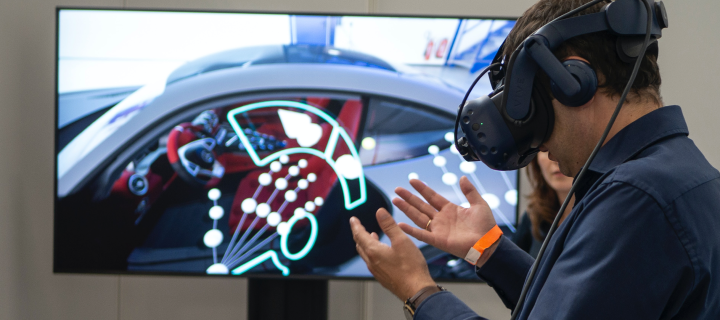Virtual reality comes in three flavors
Summary: Virtual reality and augmented reality can be achieved through multiple approaches, including wearables, implants, and environments.

You can group approaches to augmented reality and virtual reality (AR/VR) into three categories:
- Wearables
- Implants
- Environments
In this post, I’ll talk a bit about what each approach is, how they differ, and the challenges and opportunities I see in them.
Wearables

Wearables are probably what most people think of first when it comes to AR/VR. Virtual reality headsets, perhaps paired with haptic gloves, have been in the public consciousness as long as I can remember — certainly since a period of virtual reality hype in the 1990’s.
The key distinctive feature of wearables is in the name: they are worn. They can be put on and taken off.
The space is already crowded with tech giants looking for a piece of the pie. Current players include Microsoft with HoloLens,A Google with Glass, and Meta with their Quest line of VR headsets. Even Apple is reportedly planning an entry.
Challenges and opportunities
The technology isn’t without challenges.
Google Glass faced significant social backlash when entering the market. This was mostly due to the camera. B It was too easy, people feared, for creeps to make recordings without others knowing it. (Notably, Ray Ban and Meta have since partnered to bring a wearable glasses camera to market without as much public relations furor.)
Glass also suffered from form-factor issues. It was strange to have to keep glancing into the upper corner of your field of vision to benefit from AR. Practical AR/VR will need to command the full range of a person’s vision or, at least, the central part of it.
Oculus and HoloLens have been plagued by issues around nausea and headaches.
Size and weight are the biggest hurdles with current headsets. Nobody wants to go about their daily life with a bulky apparatus strapped onto them or, even worse, tethered by a cable.
These are all solvable problems, but the tech isn’t quite there yet.
The real promise of wearables is to make the tech small enough to be worn like everyday apparel, yet with capabilities close to those of the heavier, full headsets.
Perhaps one of the most interesting directions is under development by a company called Mojo Vision, who are experimenting with augmented reality contact lenses.
The tech is in its infancy — the screens aren’t anywhere near the resolution they’d need to be for rich experiences — but when paired with another device to handle processing (most likely a phone), they could be a powerful blend of future tech, practicality, and social acceptability.
To me, the biggest advantage that wearables have over the other approaches to augmented reality is that you can take them off and put them away. You have the option to disengage, and that’s important for both privacy and autonomy. We’ll explore that more when we talk about other approaches.
Implants
The second major category of approaches to AR/VR is implants. Theoretically, this category could include technologies similar to Mojo Lens if surgically installed. However, issues with versioning probably make that kind of application impractical. (Nobody wants to have eye surgery every three or four years to get a hardware upgrade.)
Probably the most visible and interesting player in this space is Elon Musk’s company Neuralink, which is experimenting with direct connection to brains. It seems to be still very early days for this technology, but you could easily imagine a future world in which stimulation of the right neurons could create images directly in a person’s mind.
Challenges and opportunities
Implants — especially direct brain connections — aren’t without controversies of their own. There’s a worryingly small distance between Musk’s utopian vision of democratized, augmented intelligence and the very opposite end of the spectrum . . . a totalitarian dystopia where people are monitored, manipulated, or imprisoned by technology. (Think of the 1999 science fiction film, The Matrix, and you have a rough idea.)
Directly controlling people’s thoughts is probably out of reach — at least for a long, long time — but if the technology can manipulate what people see and hear (which would be necessary for AR/VR) there’s nothing to say that a government, corporation, or even a group of enterprising hackers couldn’t subvert the technology for nefarious purposes.
For example, the tech could be used to bombard people’s subconsciouses with propaganda while they slept. (If we think online misinformation is bad now, imagine what it’d be like if conflicting claims and worldviews were literally beamed into your dreams à la the 2010 movie, Inception.)
Even if the images weren’t realistic enough for that level of influence, a controller could still more directly distract or incapacitate someone by occluding vision or inducing nausea and dizziness. It could even be considered a more “humane” crowd control method than tear gas or water cannons.
Perhaps most sobering, there would be literally no way to escape. Whether your eyes were open or closed would have no bearing at all on what you saw, because the images would be created directly in your brain. Scary stuff.
On the positive side, if the technology is successful it could provide the richest possible experience. Creating images directly in people’s brains immediately sidesteps all the hardware and form-factor issues that wearables have. Imagine closing your eyes and being immediately swept away to a remote tropical beach or a Parisian cafe.
But perhaps the most significant potential of this approach is for people who live with some kind of vision disability. Other forms of AR/VR still require a functioning visual apparatus, but brain implants could provide a form of sight to everyone, regardless of how functional their biological eyes were. This would be similar (though not the same) as what cochlear implants do for people with hearing loss.
Star Trek’s Geordi LaForge may not be too unrealistic — though reality may forego need for his signature visor.
Environments

The third category to explore is environments, what I think of as “intelligent spaces.” To me, this is the one that’s the most interesting, though I’m guessing it’s probably also the most difficult to achieve practically.
One vision for this approach is the Star Trek holodeck, a dedicated space for simulated experience. What’s more interesting to me is a future world in which many common spaces, like meeting rooms, living rooms, etc., are the augmented environments.
Challenges and opportunities
The physics involved might make this approach difficult. The beams of light would need a high level of precision — the ability to reach the correct location in the back of a person’s eye, through their pupil, from across a room. And scale isn’t the only challenge. The projectors would also need to account for optical distortion effects in the air. Power levels would need to be tuned such that they wouldn’t damage a viewer’s eye the way that traditional lasers do.
There would need to be a large enough number of them to provide a continuous image to a viewer, no matter where they were in the environment or which way they turned. There would also need to be enough cameras to effectively track viewers’ eyes as they moved through the environment. This means hundreds of devices placed around the environment. Cost aside, the devices would need to be miniturized enough that they would seem invisible, not distracting from the decor.
And, of course, there are considerable privacy issues with putting the tracking cameras everywhere. A future world where every space is an intelligent space could suffer from similar types of dystopian abuse as mentioned in the implants section. (Though to a lesser degree — With this approach, even if you were imprisoned in a space, you could always at least close your eyes to instantly shut off the images.)
One of the biggest benefits of intelligent spaces is that they are the least physically invasive of the approaches. Implants require surgery. Wearables require you to carry something on your body or at least in close proximity. Intelligent spaces are just there, ambient, requiring nothing of you beyond your physical presence. You can walk into them when you want to experience augmented reality and leave when you’re done.
Rate this note
Read this next
AI art and the loss of practice
With the advent of AI art generation, one of the things that may be at risk is the ineffable nuance in skill that comes from repeated practice.
Level-up your storytelling
Understand how stories work. Spend less time wrangling your stories into shape and more time writing them.